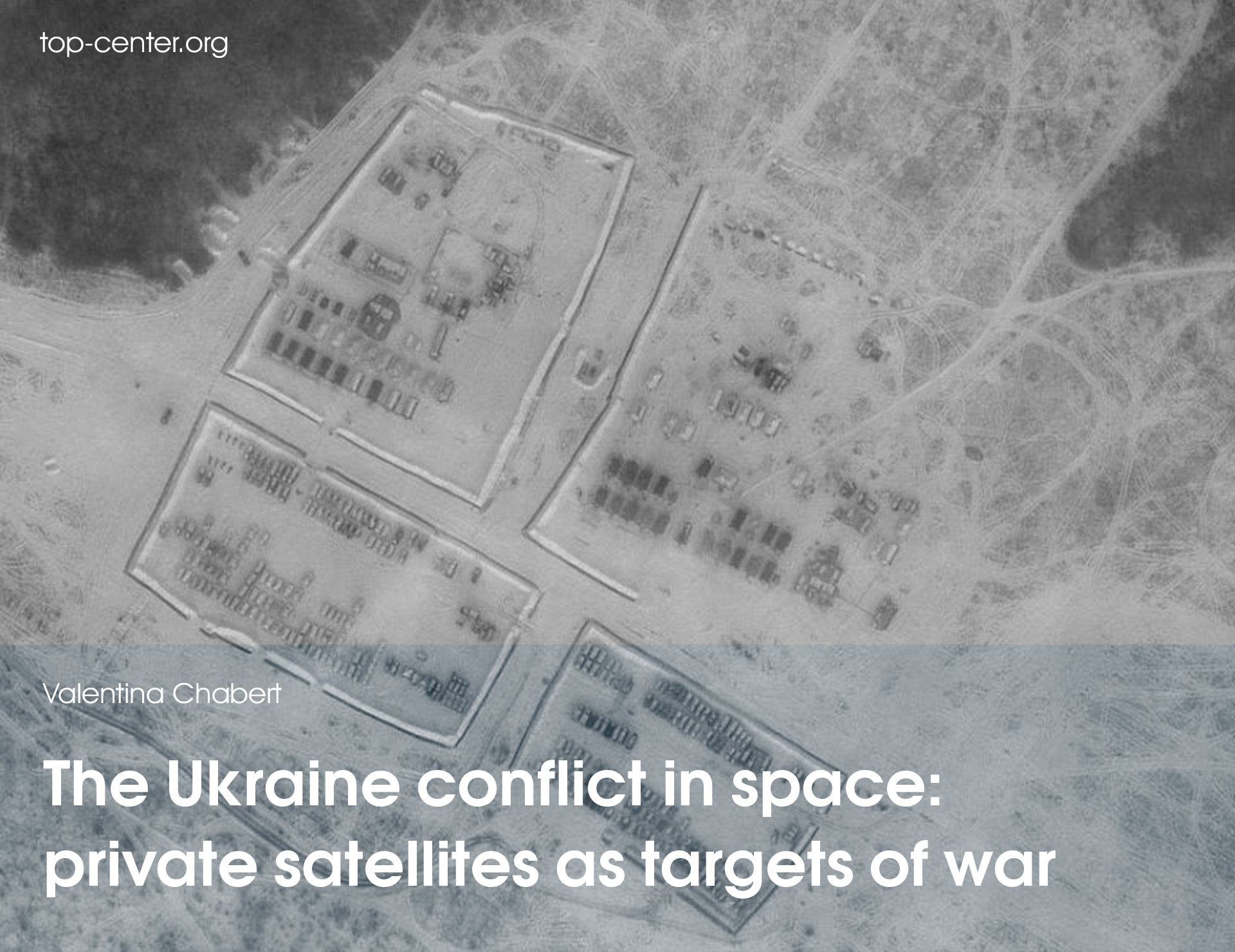The Ukraine conflict in space: private satellites as targets of war

In parallel with military operations on the battlefield, since the outbreak of the Russian-Ukrainian conflict outer space qualified itself as an additional and poorly-explored environment in which both belligerents conducted hostile actions in order to acquire strategic advantages over the adversary.
Markedly, the employment of space orbits as war domains does not appear to be an element of novelty, since State actors already recurred to outer space technologies during previous conflicts with a view to retrieve satellite images, monitor enemy armies’ movements on battlefronts, and to conduct intelligence operations. Notwithstanding, an in-depth observation of the nature of current space destabilization operations within the context of the conflict in Ukraine indicates that a rather innovative handling of outer space and particularly Low Earth Orbits - which are located approximately between 540 and 570 kilometers of altitude - is occurring.
As a matter of fact, the involvement of private space corporations as supportive actors to war operations on the ground marked a watershed from the traditional use of space orbits, thereby posing major challenges to sovereign States, national armies and space agencies that ordinarily possess the exclusive monopoly over civil and military satellites. Against this background, the question on whether space capabilities are progressively penetrating the domain of military confrontation increasingly appears to have a positive answer.
The case of private space companies registered in the United States represents a case in point in this regard. Hence, since November 2021 dubious accumulation of Russian military equipment on the Ukrainian border was detected through the collection of GPS images and the employment of private spy satellites pertaining to US space enterprises, which proved fundamental to alert the Western governments of a potential upcoming invasion of Ukraine. Similarly, images of Russian tanks along the road connecting Belgorod to Ukraine were disclosed on Google Maps hours before the official onset of the Kremlin’s “Special Military Operation” (SMO), thereby allowing both Kyiv’s Ministry of Defense and Western intelligence services to monitor Russian mobility in real time. Under such circumstances, private companies’ assistance in the satellite communication and space services emerged as a vital supportive element to secure Ukraine army’s operations on the battlefield, whose importance is thoroughly comparable to the prompt military and financial aid provided on the part of NATO Countries, spearheaded by the USA and EU institutions.
In terms of strategic advantage, preventing eventual Russian military attacks against communication cables emerged as an impelling priority for Kiev, as these easily evolved into military targets due to their relevance for information flows. In that respect, it was Starlink’s satellite communication system owned by the capitalist billionaire Elon Musk which served as the primary means to permit the sharing of sensitive data with the Ukrainian army in combat areas, as well as to guarantee President Volodymyr Zelenskyj’s live appearances in European institutions and in social media to underpin the Ukrainian cause. More precisely, a few days after the Russian invasion Ukraine Deputy Prime Minister and Minister of Digital Transformation Mykhailo Fedorov solicited Elon Musk’s intervention on Twitter (rather than through a formal request coming from the Ministry he heads), which resulted without delay in the installation of Starlink terminals on the Ukrainian soil and in the concomitant permission to utilize the company’s satellites positioned in Low Earth Orbits. The need to avoid a possible interpretation of Musk's action as overlapping with a direct involvement of the US Government led to the immediate organization of a press conference in the presence of Pentagon spokesman John Kirby, who underlined that the provision of Starlink’s satellite communication system to Ukraine was to be exclusively understood as an activity of the company in its private capacity.
Despite this, from a wider perspective Elon Musk’s commitment in Ukraine undoubtedly acted as a revolutionary element in the way communication and military actions are conducted in times of war. Hence, tactical communication has been geographically displaced from the Earth to the orbits and consequently centered upon satellites, which in the context of the expansion of the new space economy sector are progressively brought into the hands of private space capitalist enterprises. Likewise, the security of communications appears to acquire a novel strategic importance in military engagements. In this perspective, unlike previous conflicts, the contribution of private corporations in the domain of satellite imagery and direct sale of communication systems proved to be imperative, simultaneously showing an increasingly lesser degree of quality distance between traditional State-owned and high-performing private satellites.
The renewed centrality of Low Earth Orbit–located satellites as part of modern military confrontations is furthermore confirmed by a set of Russian deterrent actions directed against Western satellite systems which took place in the months prior to the war in Ukraine. As a matter of fact, as early as in 2021 the Russian Ministry of Defense authorized the demolition of the decommissioned Soviet-era satellite Kosmos 1408, giving rise to powerful international objections because of the risk of propagation of a debris cloud in the Low Earth Orbit. If on the one hand the destruction of Kosmos 1408 unequivocally jeopardized the astronauts who inhabited the International Space Station located in the orbital belt where debris was spread, on the other hand the whole technical department of Starlink reported tangible damages in terms of quality of services offered by the company. Markedly, Elon Musk’s satellites - which according to Russian intentions are to be banned throughout the whole national territory for security reasons - orbit at the same strategic heights in which the deterrent Kosmos 1408 action occurred, consequently requiring uninterrupted maneuvers from the Earth to prevent satellite collision with floating wreckage.
In this perspective, an additional evolution in the use of low orbits as a war domain is to be mentioned. Notably, as satellites are located on that orbital belt in an increasingly complex network, States do not limit themselves to the launch of cyberattacks or jamming activities with the aim of interfering with the normal observation and supervision activities. Conversely, states also favour military deterrence through their disablement (and even the destruction), thus paving the way for dangerous and unresearched consequences, and also for the relations of power between private companies on the one side, and national governments which possess in-orbit satellites, on the other.
Eventually, the 1999-published volume Unrestricted Warfare, in which Chinese Air Force colonels Quao Liang and Wang Xiangsui investigate the changes that concerned war in the tools, in the technology, in the modalities and the forms, appears to be particularly alive. Especially, traditional models and the logic of war itself are currently subject to debate, with a strong tendency to include cyber and outer space as new dimensions in which conventional conflicts are fought. From this perspective, the conflict in Ukraine is no exception: indeed, as examined, the resort to newspace technologies at the time of an armed confrontation no longer characterizes as an exclusive prerogative of the military, similarly keeping the risk of an extension of the war to the cosmos particularly high.







